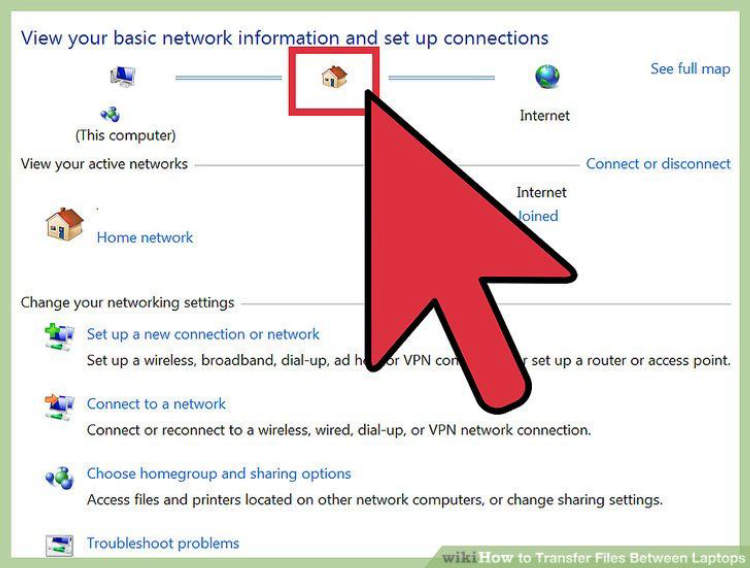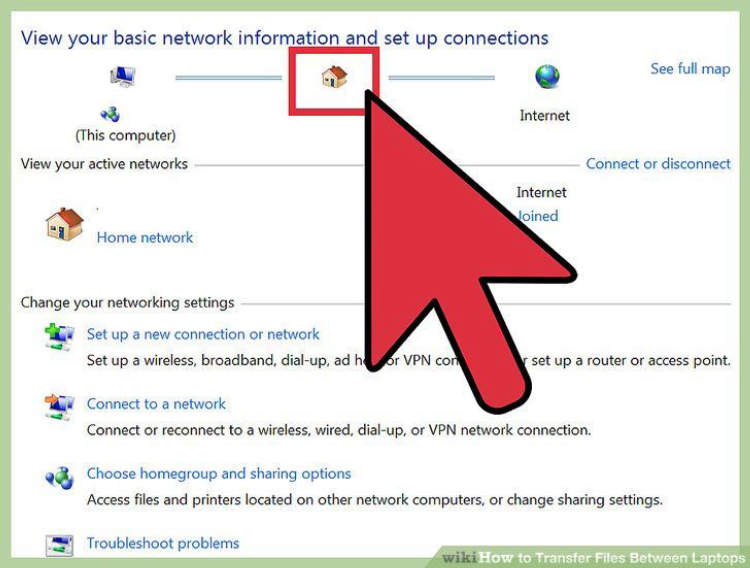Transferring files between laptops can be a daunting task, especially for those who are not tech-savvy. However, with the right guidance and tools, it can be a seamless process that allows you to effortlessly share files between devices. In this article, we will explore different methods and techniques to help you transfer files between laptops easily and efficiently.
Whether you need to transfer documents, photos, videos, or any other type of file, we’ve got you covered. We will discuss both wired and wireless transfer options, as well as popular software and online services that simplify the process. So, if you’ve been struggling with transferring files between laptops, read on to discover the solutions that will make your life easier.
The Importance of File Transfer between Laptops
In today’s digital age, file transfer between laptops has become an essential task. Whether you need to share important documents with colleagues, transfer files from an old device to a new one, or collaborate on projects with team members, being able to effectively transfer files between laptops is crucial. Here are some reasons why it is important:
1. Seamless Collaboration
File transfer allows for seamless collaboration among individuals or teams working on a shared project. By easily sharing files between laptops, team members can access the most up-to-date versions of documents, make edits, and provide feedback. This ensures that everyone is on the same page and enables efficient collaboration without any delays.
2. Backup and Recovery
Transferring files between laptops is not only useful for collaboration but also for creating backups. By regularly transferring important files to a separate laptop or external storage device, you can ensure that your data is safe and protected. In case of laptop malfunction or loss, having a backup of important files ensures that you do not lose valuable information.
3. Transition to a New Laptop
When upgrading to a new laptop, file transfer becomes essential. Transferring files, documents, settings, and preferences from the old laptop to the new one ensures a smooth transition without losing any important data. This saves time and effort that would otherwise be spent setting up the new laptop from scratch.
4. Sharing Resources and Information
File transfer between laptops enables the sharing of valuable resources and information. Whether it’s sharing educational materials with students, distributing important documents in an office setting, or exchanging multimedia files with friends, being able to transfer files quickly and efficiently enhances communication and knowledge sharing.
5. Increased Productivity
Efficient file transfer between laptops leads to increased productivity. Instead of relying on slow or unreliable methods like sending files via email or using physical storage devices, transferring files directly between laptops saves time and eliminates the need for manual intervention. This allows individuals and teams to focus more on their work and accomplish tasks efficiently.
In conclusion, the ability to transfer files between laptops plays a crucial role in today’s digital world. Whether it’s for collaboration, backup purposes, transitioning to a new device, sharing information, or improving productivity, file transfer between laptops is essential. By utilizing modern file transfer methods, individuals and organizations can streamline their workflows and ensure seamless data transfer.
Methods for Transferring Files between Laptops

When it comes to transferring files between laptops, there are several methods you can employ depending on your preference and the resources available to you. Here are some effective ways to move your files from one laptop to another:
1. USB Flash Drive
Using a USB flash drive is one of the most straightforward methods to transfer files between laptops. Simply insert the flash drive into the USB port of your source laptop, copy the desired files onto the drive, and then plug it into the destination laptop to transfer the files. It’s quick, easy, and doesn’t require an internet connection.
2. External Hard Drive
If you have a large number of files to transfer or you want to move files of larger sizes, an external hard drive is a great option. Connect the external hard drive to your source laptop, copy the files onto the drive, and then connect it to the destination laptop to complete the transfer. This method allows for faster transfers and can be used repeatedly.
3. Cloud Storage Services
Cloud storage services like Dropbox, Google Drive, or Microsoft OneDrive provide a convenient way to transfer files wirelessly between laptops. Simply upload the files from your source laptop to the cloud storage, and then download them onto the destination laptop. This method requires an internet connection and is ideal for transferring files of any size.
4. Ethernet Cable
If your laptops have an Ethernet jack, you can use an Ethernet cable to establish a direct connection between the two laptops. This method allows for high-speed file transfers without the need for an internet connection. Simply connect one end of the Ethernet cable to each laptop, ensure both laptops are on the same network, and then transfer the files using file sharing options available in your operating system.
5. Wi-Fi Direct
If both laptops support Wi-Fi Direct, you can establish a wireless connection between them without the need for a router. Enable Wi-Fi Direct on both laptops, establish a connection between them, and then use file sharing features to transfer the files. This method is convenient and efficient for transferring files wirelessly.
Choose the method that best suits your needs and enjoy seamless file transfers between your laptops!
Tips for a Smooth and Secure File Transfer Process
Transferring files between laptops can be a daunting task, especially if you want to ensure a smooth and secure process. Here are some helpful tips to make the file transfer experience hassle-free:
1. Use a Reliable File Transfer Method
Choose a file transfer method that is secure and reliable. Consider using cloud storage services like Dropbox, Google Drive, or OneDrive, which offer encryption and ensure your files are safely stored and transferred.
2. Update Your Antivirus Software
Prioritize the security of your files by updating your antivirus software. This will help detect and eliminate any potential threats during the file transfer process.
3. Organize and Compress Your Files
Before transferring your files, take the time to organize them into relevant folders. This will not only make it easier to find and access specific files later but also help ensure a smoother transfer process. Consider compressing large files into zip folders to reduce file size and save transfer time.
4. Check File Compatibility
Make sure that the file format and programs you are using on both laptops are compatible with each other. This will prevent any issues during the transfer process and ensure that the files are accessible on the receiving laptop.
5. Use a Reliable Wi-Fi Connection
When transferring files wirelessly, ensure that you have a stable and secure Wi-Fi connection. Unstable connections can lead to interrupted transfers or corrupted files. If possible, connect both laptops directly using an Ethernet cable for a faster and more reliable transfer.
6. Double-Check Before Deleting Files
After completing the transfer, double-check that all files have been successfully transferred to the receiving laptop. Make sure everything is in order before deleting any files from the original laptop.
7. Keep Backup Copies
Even though you have successfully transferred your files, it is always a good practice to keep backup copies. Store them on an external hard drive, cloud storage, or another reliable backup solution to prevent data loss.
By following these tips, you can ensure a smooth and secure file transfer process between laptops. Whether you are transferring important work documents or personal files, these precautions will help safeguard your data and make the process much more efficient.
Conclusion
Transferring files between laptops can be done in several ways, depending on the available resources and personal preferences. It is important to consider the size and type of files being transferred, as well as the time and convenience factors.
One of the easiest and most common methods is to use a USB flash drive. Simply copy the files from one laptop to the flash drive, then plug it into the other laptop and paste the files. This method is suitable for small to medium-sized files, but may be time-consuming for large files due to the limited transfer speed of USB drives.

